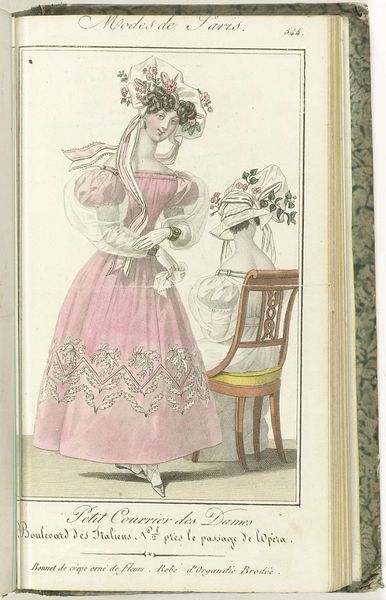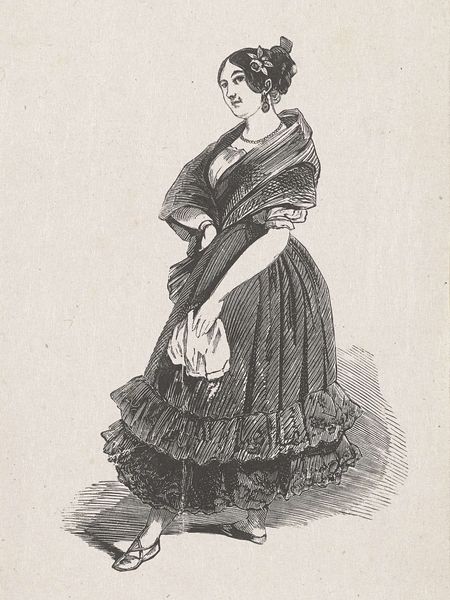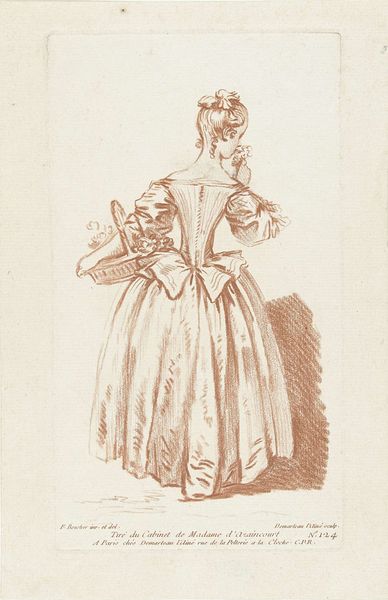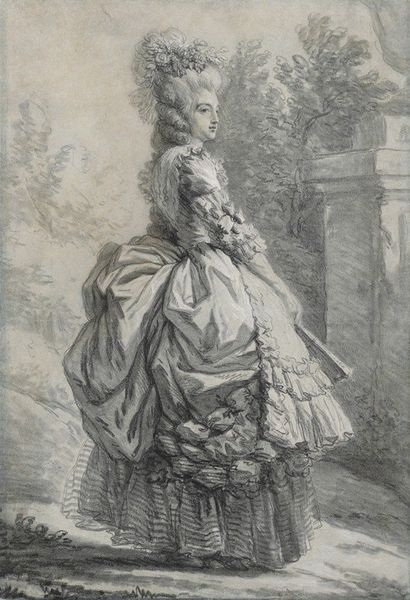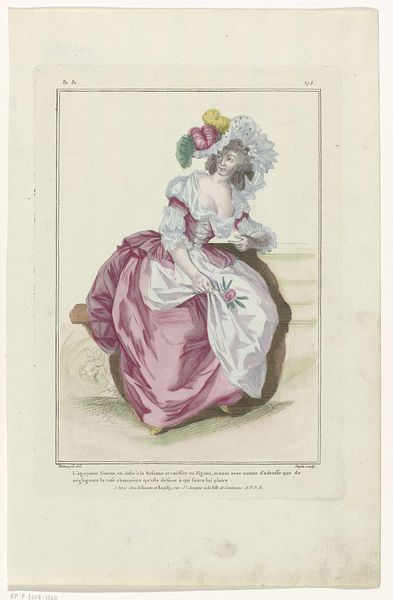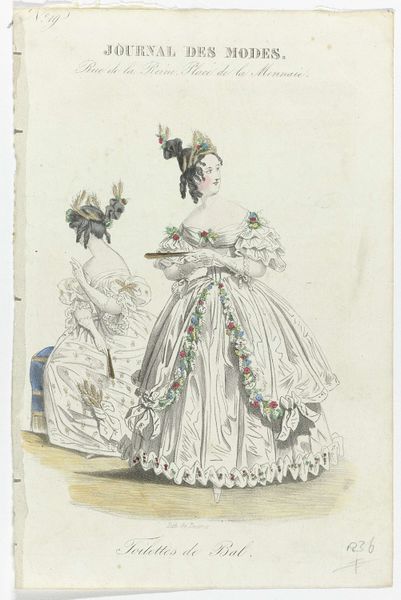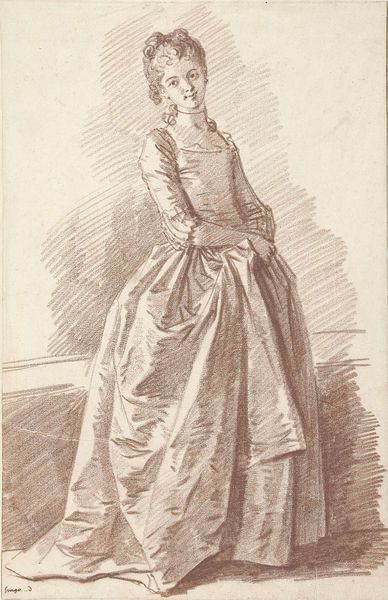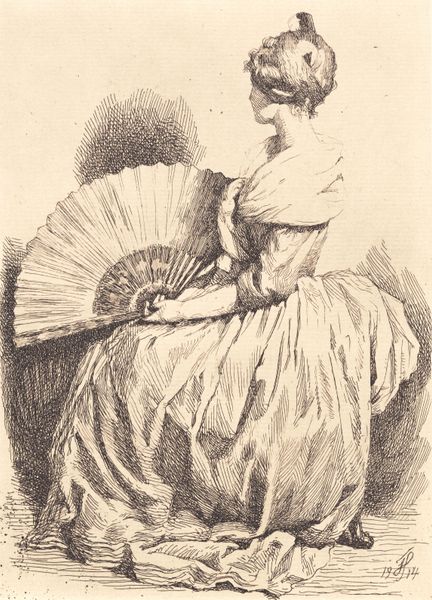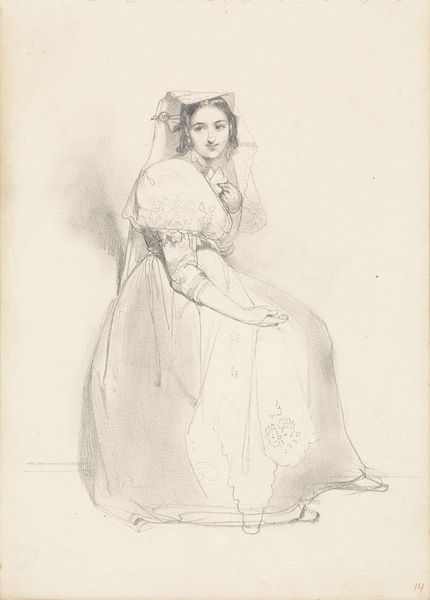
Curator: This is Émile Bayard's "Suzanne, from ''The marriage of Figaro,''" created around 1876 using pencil. Editor: It strikes me as a study in contrasts: the dark graphite against the pristine white of her dress creates such an arresting image. Curator: Precisely. Bayard was a popular illustrator and artist during his time, known for his contributions to illustrated books and periodicals. He captures Suzanne here with a blend of Romanticism and the meticulous detail characteristic of academic art. "The Marriage of Figaro," of course, is Beaumarchais's late 18th-century play—a sharp social critique wrapped in comedic opera. Editor: Knowing the source material, I immediately interpret Suzanne’s upward gaze as one of hopeful defiance, but also awareness, her white dress perhaps symbolizing not just purity, but the societal pressures placed on women. The way Bayard uses light and shadow adds a palpable sense of depth and even psychological complexity. I can see both optimism and, simultaneously, confinement in her. Is this not suggestive of women’s plight in a patriarchal society, constrained by its superficial expectations? Curator: Interesting point. Suzanne's character is very significant, embodying cleverness and resilience against class exploitation, so I’d argue this piece certainly elevates the female perspective. The pencil strokes almost vibrate with subtle emotion and suggest a dynamic reading of her positionality. Her expression tells that she has power. Editor: It makes you wonder how different the representation would be from a female gaze; regardless, it's a visually compelling drawing. Thanks for shedding light on the socio-political context that informs its meaning. Curator: Absolutely. Understanding art is an opportunity to rethink existing social relations.
Comments
No comments
Be the first to comment and join the conversation on the ultimate creative platform.

